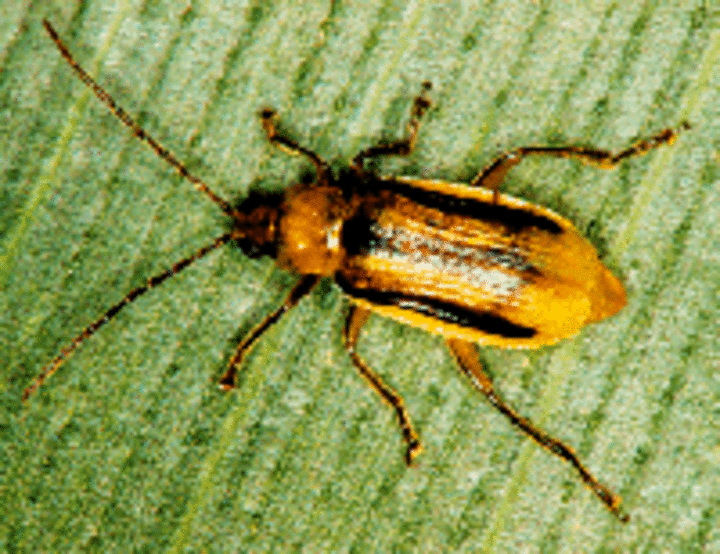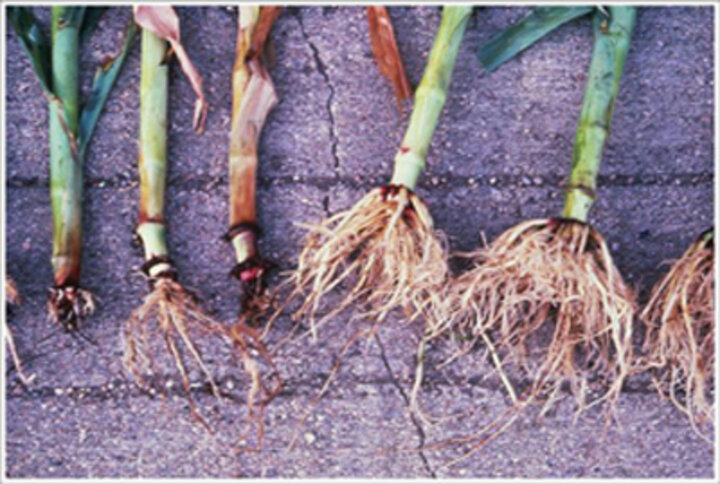July 11, 2012
This content requires Flash Download the free Flash Player now!
//
Get The Code to Embed This Audio Clip
Western corn rootworm beetles have been emerging since mid-June in south central Nebraska, indicating that rootworm larval feeding is ending. Mid-July would be a good time to dig roots to evaluate the efficacy of your rootworm management program.

The presence of adult beetles or rootworms in a field is not necessarily an indication of product failure. Some rootworm beetles will emerge from Bt corn hybrids labeled for corn rootworm control. Soil insecticides are applied in a narrow band or in furrow to the soil, or as a seed treatment, and corn roots grow beyond the treated zone where rootworm larvae may survive.
Also, if you find plant lodging, don't assume that rootworm injury is the cause. Lodging may occur without significant rootworm feeding. To see whether rootworms are the cause, dig and wash some roots to check for rootworm injury.
Rootworm efficacy can only be evaluated reliably if replicated, untreated check strips are left in the same field as the treatment. Without check strips, you won't know whether the absence of injury is due to product efficacy or the absence of rootworms. In the case of Bt rootworm corn hybrids, comparison to the refuge field may be useful.
Sampling for Root Injury
- Before corn plants can be rated for injury, they need to be at a growth stage where at least three nodes of roots are clearly visible.
- Dig at least 10 randomly selected plants from several areas of a field.
- Leave a 9-inch cube of soil surrounding the root system.
- Wash the roots to remove soil and rate each plant for injury using the rating scale (below). If several weeks have passed between the end of rootworm injury and the time of root rating, new root growth may hide the injury. Examine roots carefully to accurately rate them.
Rating Root Injury
 Varying degrees of corn rootworm injury. Rating damage using a standardized scale can help you determine the need for treatment.
Varying degrees of corn rootworm injury. Rating damage using a standardized scale can help you determine the need for treatment.

The most widely used method to evaluate root injury has been developed at Iowa State University. It is based on a 0-3 scale. The 0-3 scale is linear and the meaning of the injury values are easy to understand. In this scale
0 = no damage,
1 = one complete node of roots is pruned to within 1.5 inches of the stalk,
2 = two complete nodes of roots are pruned, and
3 = 3 nodes of roots are pruned.
Fractional ratings are possible, for example, 1.5 = equivalent of 1.5 nodes of roots pruned.
The relationship between root injury rating and yield loss is complex, but usually a root injury rating of 0.25 or more on the 0-3 scale is needed to cause economic yield loss. The corn plant has the capacity to regrow roots and compensate for some early season injury, especially if soil moisture and fertility are adequate during the regrowth period.
If you have a field average root rating of 1.0 or more, your current management program needs to be modified. This might include rotating crops, changing to a different hybrid, or using rootworm insecticides targeted against larvae or adults.
Bob Wright
Extension Entomologist
